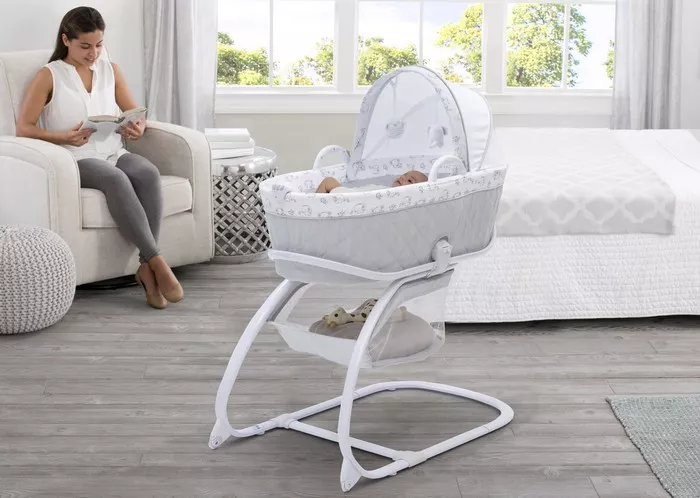When it comes to creating a safe and comfortable sleeping environment for your baby, parents are faced with a myriad of options, including the choice of crib design. Among the various crib styles available, round cribs have gained popularity for their unique aesthetic appeal and space-saving benefits. However, concerns about safety often arise with non-traditional crib designs like round cribs. In this article, we will delve into the safety considerations associated with round cribs to help parents make informed decisions about their baby’s sleeping arrangements.
Understanding Round Cribs: A Brief Overview
Round cribs, as the name suggests, feature a circular design rather than the conventional rectangular shape of standard cribs. This distinctive design sets round cribs apart, offering a visually striking alternative for nurseries. Round cribs typically come in various sizes to accommodate different age ranges, from newborns to toddlers.
One of the primary appeals of round cribs is their space-saving nature. The circular shape allows them to fit snugly into corners or even serve as a centerpiece in the nursery without protruding awkwardly into the room. This can be especially advantageous for parents with limited space or those seeking to create a cohesive, modern aesthetic in their baby’s room.
Safety Concerns Surrounding Round Cribs
While round cribs may offer aesthetic and space-saving benefits, concerns about their safety persist among parents and caregivers. Some of the key safety considerations associated with round cribs include:
1. Suffocation Risk: One of the primary concerns with round cribs is the potential for suffocation if a baby’s face becomes pressed against the crib’s circular perimeter. Unlike standard cribs with four solid sides, round cribs have a continuous curved surface, which could pose a suffocation hazard if a baby’s breathing becomes obstructed.
2. Entrapment Hazards: Another safety consideration is the risk of entrapment between the crib’s mattress and the circular frame. Depending on the design of the crib, gaps or spaces may exist where a baby’s limbs or body could become trapped, leading to injury or suffocation.
3. Stability and Durability: Round cribs may vary in terms of stability and durability, depending on factors such as construction materials and design quality. Weak or unstable cribs could pose a risk of collapse or tipping over, potentially causing injury to the baby.
4. Standardization and Regulation: Unlike traditional rectangular cribs, round cribs are less standardized, which can make it challenging to ensure compliance with safety regulations and guidelines. This lack of uniformity may result in inconsistencies in design, construction, and safety features across different round crib models.
5. Compatibility with Standard Crib Accessories: Parents may encounter difficulties finding compatible accessories such as crib mattresses, bedding sets, and crib liners designed specifically for round cribs. Using accessories that are not intended for use with round cribs could compromise safety and increase the risk of accidents or injuries.
Mitigating Risks and Ensuring Safety
While round cribs present unique safety considerations, there are steps parents can take to mitigate risks and ensure a safe sleeping environment for their baby:
1. Choose a High-Quality Crib: Opt for a round crib from a reputable manufacturer known for producing safe and durable baby furniture. Look for cribs that meet or exceed safety standards set by organizations such as the Consumer Product Safety Commission (CPSC) or ASTM International.
2. Inspect the Crib Thoroughly: Before purchasing or using a round crib, carefully inspect it for any signs of damage, defects, or poor craftsmanship. Ensure that all components are securely fastened and that there are no sharp edges, protrusions, or gaps that could pose a risk to the baby.
3. Select Appropriate Bedding and Accessories: Use bedding, mattresses, and accessories specifically designed for round cribs to ensure proper fit and safety. Avoid using loose bedding, soft pillows, or plush toys that could increase the risk of suffocation or entrapment.
4. Monitor Your Baby During Sleep: Regardless of the crib design, it’s essential to monitor your baby closely while they sleep to ensure their safety. Place the crib in your bedroom or use a baby monitor to keep an eye on your baby’s sleeping habits and address any concerns promptly.
5. Follow Safe Sleep Guidelines: Adhere to safe sleep practices recommended by pediatricians and child safety experts, such as placing the baby on their back to sleep, avoiding overheating, and keeping the crib free of clutter or hazards.
6. Consider Long-Term Usability: Evaluate the long-term usability of a round crib, considering factors such as its adaptability as the baby grows older and transitions to a toddler bed. Investing in a convertible round crib that can be converted into a toddler bed or daybed may offer added value and longevity.
Conclusion
While round cribs offer a visually appealing and space-saving alternative to traditional rectangular cribs, they come with unique safety considerations that parents should carefully weigh before making a decision. By understanding the potential risks associated with round cribs and taking proactive measures to mitigate those risks, parents can create a safe and comfortable sleeping environment for their baby. Ultimately, the safety and well-being of the baby should always be the top priority when selecting a crib design.


